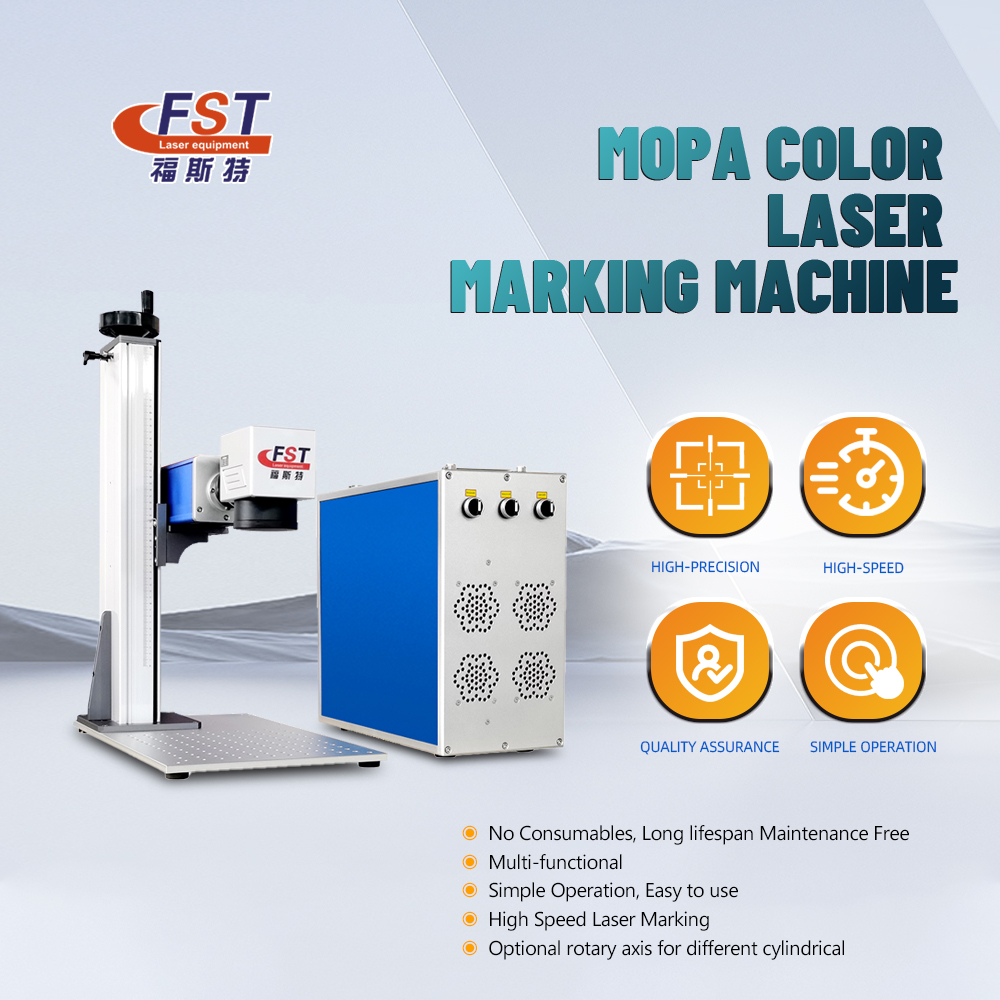Laser marking machines utilize high-energy-density lasers to irradiate specific areas of a workpiece, causing the surface material to vaporize or undergo a chemical reaction that changes its color. This process creates a permanent mark by exposing the underlying material, forming patterns or text. With continuous advancements in technology, laser marking machines have found applications in various fields, including trademark printing on metal and glass products, personalized DIY pattern printing, barcode printing, and more.
Due to the powerful laser coding technology and the widespread applications in the identification industry, laser marking machines have evolved into various models. Each model has its own distinct characteristics, including different laser wavelengths, laser principles, laser visibility, and varying frequencies. To help you find the laser marking product best suited for your production line, here is a brief introduction to some common types of laser marking machines.
Fiber laser marking machines are a well-established type of laser marking equipment. They are primarily used for marking metal materials but can also be applied to certain non-metal materials. These machines are renowned for their high efficiency, excellent beam quality, and long service life. Fiber laser marking machines offer precise and rapid marking capabilities, making them popular in industries such as gold and silver jewelry, sanitary ware, food packaging, tobacco and beverages, pharmaceutical packaging, medical devices, eyewear, watches, automotive parts, and electronic hardware. Common applications include marking serial numbers, barcodes, logos, and other identifiers on materials such as gold, silver, stainless steel, ceramics, plastics, glass, stone, leather, fabric, tools, electronic components, and jewelry.
UV laser marking machines use ultraviolet (UV) lasers with a wavelength typically around 355 nm to mark or engrave materials. These lasers have shorter wavelengths compared to traditional fiber or CO2 lasers. UV lasers generate high-energy photons that break the chemical bonds on the material’s surface, resulting in a “cold” marking process. As a result, UV laser marking machines are ideal for marking materials that are highly sensitive to heat, such as certain plastics, glass, and ceramics. They produce exceptionally fine and precise markings, making them suitable for intricate designs and small-scale markings. UV laser marking machines are commonly used for marking the surfaces of packaging bottles for cosmetics, pharmaceuticals, and food, as well as for marking glassware, metals, plastics, silicones, and flexible PCBS.
CO2 laser marking machines use carbon dioxide (CO2) gas as the laser medium to produce a laser beam with a wavelength of 10.6 micrometers. Compared to fiber or UV lasers, these machines have a longer wavelength. CO2 lasers are particularly effective on non-metal materials and can mark a variety of substances including plastics, wood, paper, glass, and ceramics. They are especially suitable for organic materials and are often used in applications requiring deep engraving or cutting. Common applications include marking packaging materials, wooden items, rubber, textiles, and acrylic resins. They are also used in signage, advertising, and crafts.
MOPA laser marking machines are fiber laser marking systems that utilize MOPA laser sources. Compared to traditional fiber lasers, MOPA lasers offer greater flexibility in pulse duration and frequency. This allows for better control over the laser parameters, which is particularly advantageous for applications requiring precise control of the marking process. MOPA laser marking machines are commonly used in applications where control over pulse duration and frequency is crucial, and they are especially effective for creating high-contrast markings on typically challenging materials, such as anodized aluminum. They can be used for color marking on metals, fine engraving on electronic components, and marking on delicate plastic surfaces.
Each type of laser marking machine has its specific advantages and is suitable for different applications based on the material to be marked and the desired marking results.
Post time: Sep-11-2024




